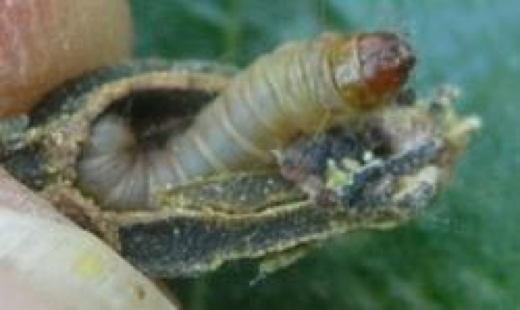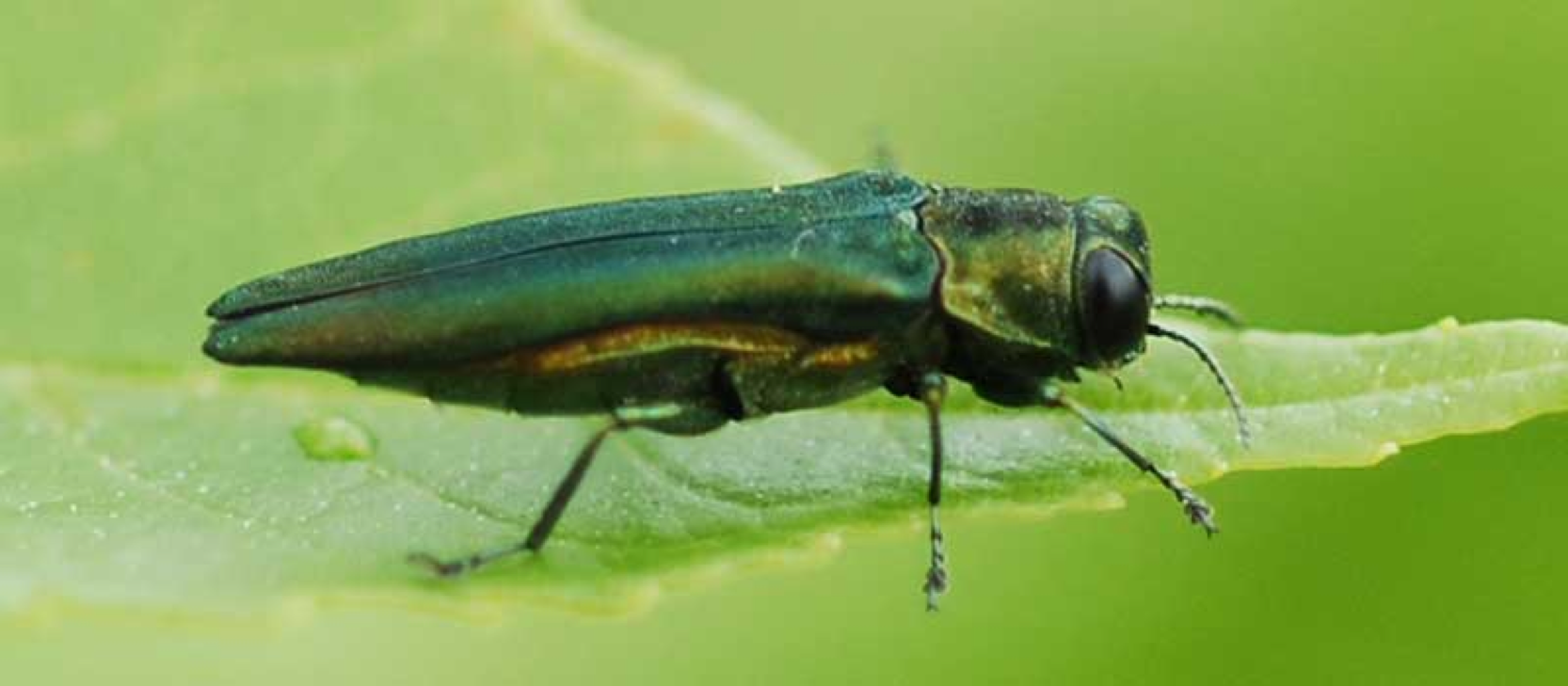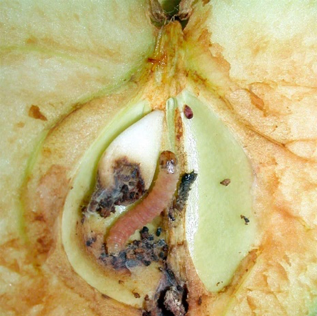
Pecan Nut Casebearer (Pyralidae): caterpillar of small plain moth which feeds on pecan nuts and buds. It is found in all Pecan growing areas of Texas and eastern New Mexico. The Casebearer is an extremely deadly pest of pecans, especially considering that damage is done to the pecans themselves, the economically important plant product.
- Life Cycle: around 100 eggs laid on pecan nuts, which hatch after 4 days. Larvae eat buds for 2 days then move to the pecan nutlets to feed. Caterpillars burrow into nuts to become pupae then adults. There are 2 generations yearly.
- Behavior: burrow into pecan nuts (causing damage to the economically important product). Larvae leave silk and frass near infested nuts.
- Food Source: pecan buds and nuts
- Management: pheromone traps determine population, insecticide application before the larvae enter the nuts (soon after hatching)
- Controlling the Pecan Nut Casebearer.

Emerald Ash Borer (Buprestidae): one of the jewel beetles, known for their bright color, the EAB feeds only on ash and causes many deaths. Their larvae create visible tunnels in the bark of ash trees. Adults eat leaves and do minimal damage.
- Life Cycle: adults feed on ash leaves and mate, before laying eggs in the bark of ash trees. Larvae hatch and tunnel into the bark where they devour nutrients and weaken the trees severely. Adults emerge through D shaped holes.
- Behavior: tunneling larvae. Adults do little to no damage.
- Food Source: xylem and phloem of ash trees.
- Management: timed pesticide application during mating/egg laying. Must be applied before larvae enter the trees.
- Emerald Ash Borer Information Network.

Codling Moth (Tortricidae): the number 1 pest of fruits including apples and pears. A dusky brown moth whose larvae feed on fruit flesh. The larvae are light pink with brown heads.
- Life Cycle: larval cocoons overwinter in the soil or on tree bark. Larvae pupate inside the cocoon and emerge as adults during early to mid-spring. Adults lay around 30 small eggs on leaves, branches and fruits/nuts, where larvae hatch and burrow into the fruits.
- Behavior: burrowing larva. Larvae leave holes in the apples and pears, and leave frass inside the fruits. Larvae develop more quickly in warm climates, resulting in more generations.
- Food Source: apples and pears
- Management: codling moths must be managed when the population is small to prevent increased generations. It is best to apply pesticides or beneficial insects during the egg stage or just as larvae are hatching.
- Pests in Gardens and Landscapes, Codling Moth.
